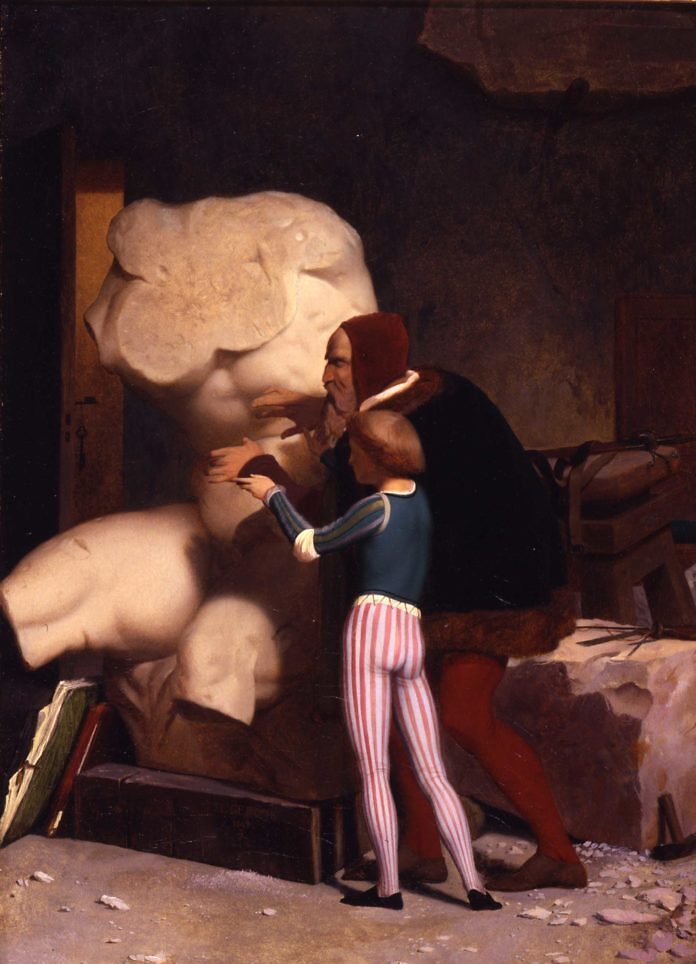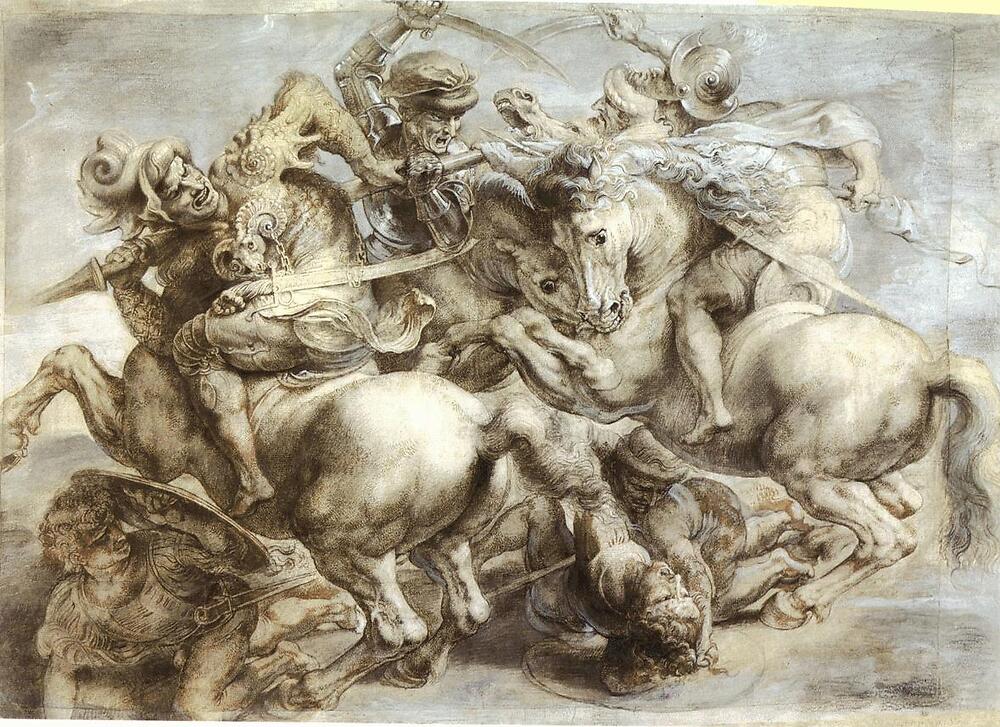Of the order of learning to draw
First draw from drawings by good masters done from works of art and from nature, and not from memory;
then from plastic work, with the guidance of the drawing done from it;
and then from good natural models and this you must put into practice.– Leonardo Da Vinci, Notebooks, Vol. 1, IX. The Practice of Painting
Master study is the archetypal drawing exercise, East and West, where the student is expected to learn from a master by studying, often copying, his work.
This is similar to how classical musicians start their journey by learning the works of great composers (Mozart, Bach, etc.)
This article merely introduces the concept; for a more in-depth exploration, the series on Bargue’s drawing course provides a nice example:
- On Bargue's drawing course: introduction (1/3)
- On Bargue's drawing course: a holistic teaching (2/3)
- On Bargue's drawing course: going further, drawing 'gong-fu' (3/3)

Michelangelo being shown the Belvedere Torso, oil on canvas, 1849, Dahesh Museum of Art, New York
by
Jean-Léon Gérôme
The study can either be:
- a full, 100% accurate replica;
- a long moment of observation;
- a copy with an emphasis on some peculiar aspects (composition, proportions, colors, etc.);
- a technical adjustment from the master work (drawing a sculpture/painting, adding colors to a drawing, etc.)
- etc.
Two examples by Rubens:

After Leonardo Da Vinci’s lost Battle of Anghiari, Louvre, black chalk, white chalk, brown ink, c. 1603
by
Peter Paul Rubens
Copy of the Belvedere Torso, Louvre-Lens, black chalk, c. 1601/1602
by
Peter Paul Rubens
In China, it was Xiè Hè (謝赫) (Liu Song (南朝宋, 420–479) and Southern Qi (南朝齊, 479–502) Dynasties)’ last out of his six principles of Chinese painting (繪畫六法), 傳移 (chúan yí), often translated as transmission by copying:
Comments
By email, at mathieu.bivert chez: